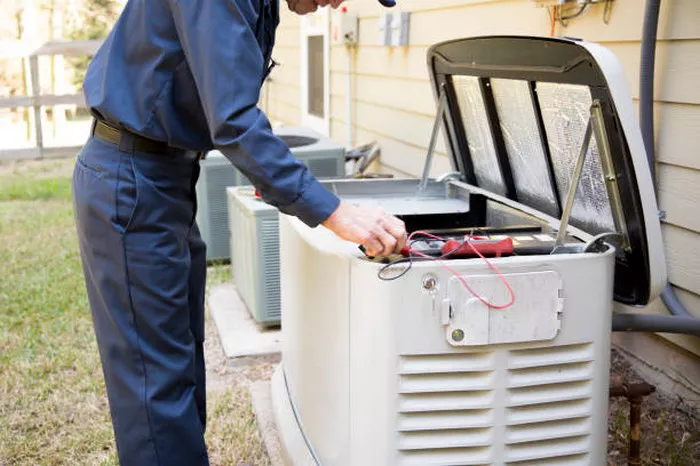Portable electrical equipment is an integral part of modern life, serving diverse applications in residential, commercial, and industrial sectors. From the power tools used on construction sites to the household appliances that make daily chores manageable, portable electrical equipment ensures efficiency, convenience, and mobility. This article explores the working principles, common types, safety considerations, and various uses of portable electrical equipment.
Definition of Portable Electrical Equipment
Portable electrical equipment refers to electrically powered devices that can be easily moved and operated without the need for fixed installation. These devices typically have a plug-and-socket connection, enabling them to draw power from standard electrical outlets. The portability feature is achieved through compact design and relatively lightweight construction.
Examples include:
Household Devices: Vacuum cleaners, hairdryers, and kettles.
Industrial Tools: Drills, grinders, and soldering irons.
Medical Equipment: Portable ventilators and diagnostic tools.
Office Equipment: Laptops and projectors.
Working Principles of Portable Electrical Equipment
The functionality of portable electrical equipment is based on the principles of electromagnetism, electrical circuits, and mechanical operation. Most devices consist of the following key components:
Power Supply: Supplies electrical energy, usually in the form of alternating current (AC) from wall outlets or batteries for cordless models.
Electric Motor: Converts electrical energy into mechanical energy in devices like drills, fans, and vacuum cleaners.
Resistive Elements: Found in heating equipment such as irons and kettles, these components convert electrical energy into heat.
Control Systems: Include switches, regulators, or microprocessors that govern the operation of the equipment.
Safety Mechanisms: Fuse systems, circuit breakers, and insulation ensure safe operation and prevent hazards like short circuits or electric shocks.
Common Types of Portable Electrical Equipment
Portable electrical equipment is versatile and categorized based on its application, construction, and operating principles. Here are some of the major types:
Power Tools
Drills: Used for boring holes in materials like wood, metal, and concrete.
Grinders: Ideal for cutting, grinding, and polishing surfaces.
Saws: Portable saws such as jigsaws and circular saws are indispensable in woodworking and construction.
Household Appliances
Toasters and Kettles: Use heating elements to toast bread or boil water.
Vacuum Cleaners: Equipped with electric motors and suction mechanisms for cleaning purposes.
Hairdryers: Combine heating coils and fans to produce warm airflow.
Medical Devices
Portable Ventilators: Critical for maintaining respiratory function in patients outside hospitals.
Blood Pressure Monitors: Handy for home use to track cardiovascular health.
Information Technology Devices
Laptops: Provide mobility in computing with rechargeable batteries.
Projectors: Widely used in meetings and classrooms for visual presentations.
Testing and Measurement Tools
Multimeters: Measure voltage, current, and resistance.
Thermal Cameras: Detect heat patterns and are often used in diagnostics.
Advantages of Portable Electrical Equipment
Mobility: Allows for operation in multiple locations without fixed installation.
Convenience: Simplifies tasks and reduces manual effort.
Efficiency: Portable power tools and appliances enhance productivity in both home and professional settings.
Space-Saving: Compact designs make storage and transportation easier.
Cost-Effective: Portable devices often reduce the need for larger, stationary machinery.
Safety Considerations
While portable electrical equipment is highly useful, improper use can lead to accidents. Following safety guidelines is crucial for mitigating risks:
Inspection and Maintenance:
Regular checks for frayed wires, damaged plugs, or malfunctioning components help ensure safe operation. Replace or repair faulty equipment immediately.
Proper Handling:
- Avoid overloading electrical circuits.
- Always disconnect equipment when not in use.
- Use handles and grips designed for the equipment to prevent drops.
Environment-Specific Precautions:
- Avoid using electrical devices in damp or wet environments unless they are specifically rated for such conditions (e.g., IP-rated equipment).
- Use extension cords only when necessary and ensure they are rated for the equipment’s power requirements.
Grounding and Insulation:
Ensure the device is properly grounded or double-insulated to prevent electric shocks.
Personal Protective Equipment (PPE):
For power tools, use PPE such as gloves, safety goggles, and ear protection to safeguard against injuries.
Applications of Portable Electrical Equipment
Residential Use:
- Cooking, cleaning, and personal care are made easier with appliances like mixers, blenders, and electric shavers.
- Entertainment devices such as portable speakers and gaming consoles enhance leisure time.
Commercial and Industrial Use:
- Construction workers rely on portable drills, saws, and sanders for building and repair tasks.
- Automotive technicians use handheld diagnostic tools for vehicle maintenance.
Healthcare:
- Portable defibrillators save lives in emergencies by providing on-the-spot cardiac support.
- Mobile X-ray machines and ultrasound scanners facilitate diagnostic services in remote areas.
Fieldwork and Outdoor Activities:
- Portable generators and lighting equipment support operations in remote or temporary locations.
- Campers and hikers use portable stoves, lights, and power banks for outdoor convenience.
Conclusion
Portable electrical equipment plays a critical role in enhancing productivity, convenience, and mobility across various domains. Understanding the principles of operation, types, and safety measures can maximize the benefits of these devices while minimizing risks. As technology evolves, the capabilities and efficiency of portable equipment continue to expand, making them indispensable in modern life. Whether in homes, workplaces, or remote areas, portable electrical equipment bridges the gap between need and functionality, empowering users with versatile and efficient solutions.

